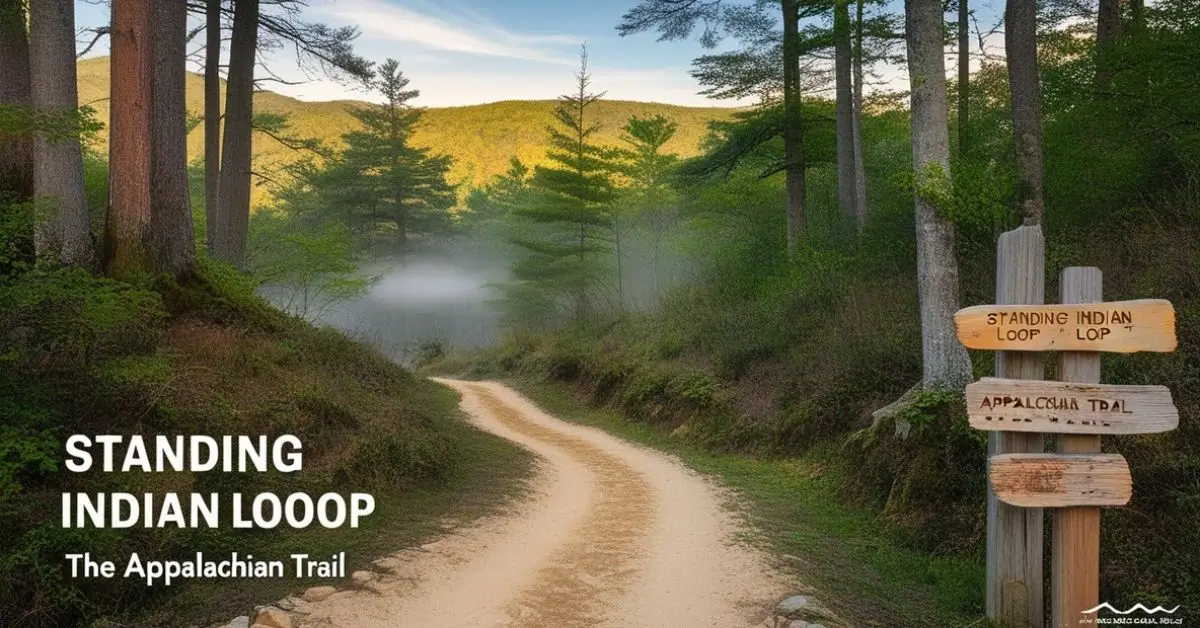The Standing Indian Loop is a popular hiking trail that combines stunning scenery, sections of the iconic Appalachian Trail (AT), and a moderate challenge for outdoor enthusiasts. Situated in the Nantahala National Forest of North Carolina, this 25-mile loop offers a rich hiking experience filled with lush forests, panoramic views, and tranquil streams. But just how difficult is it? Let’s dive into the key aspects of the trail to provide a comprehensive answer.
Overview of the Standing Indian Loop
The Standing Indian Loop begins and ends at the Standing Indian Campground, which serves as an excellent base for the hike. Hikers can tackle the loop in either a clockwise or counterclockwise direction, though most prefer the clockwise route due to its gentler elevation changes.
The loop consists of three main sections:
- Long Branch Trail (2.3 miles): This initial segment takes hikers through a forested area, ascending gradually to meet the Appalachian Trail at Glassmine Gap.
- Appalachian Trail Segment (15.4 miles): The AT section is the heart of the loop, leading hikers over Standing Indian Mountain, a highlight of the trail, and Albert Mountain, which boasts a fire tower with breathtaking views.
- Kimsey Creek Trail (6.9 miles): The final segment descends back to the campground, following a serene creek that adds a peaceful end to the journey.
Evaluating the Difficulty
The Standing Indian Loop is classified as moderate, but the level of difficulty can vary depending on factors such as fitness level, trail conditions, and weather.
1. Elevation Changes
The loop has an overall elevation gain of approximately 2,000 feet, which is manageable for most hikers. The climbs, particularly on Standing Indian Mountain and Albert Mountain, are steady rather than steep, making them accessible to hikers with a moderate fitness level. Tackling the loop clockwise minimizes the intensity of these climbs, as the steeper sections are approached as descents.
2. Trail Conditions
The trail is well-maintained, with clear signage and defined paths. However, certain sections, like the approach to Albert Mountain, feature rocky terrain and steeper inclines that require careful navigation. Muddy conditions may also occur on the Kimsey Creek Trail after rain, adding a layer of challenge.
3. Distance and Duration
At 25 miles, the loop requires 2 to 3 days to complete, depending on your pace and how often you stop. While the distance might seem daunting to beginners, experienced hikers with endurance training should find it manageable.
Comparing the Standing Indian Loop to Other Trails
To better understand its difficulty, let’s compare the Standing Indian Loop to a few other well-known trails in the region:
| Trail Name | Distance (miles) | Elevation Gain (feet) | Difficulty | Highlights |
|---|---|---|---|---|
| Standing Indian Loop | 25 | ~2,000 | Moderate | Mountain views, lush forests, sections of AT |
| Art Loeb Trail | 30.1 | ~8,000 | Strenuous | High climbs, Pisgah National Forest vistas |
| Black Balsam Knob Loop | 5 | ~1,500 | Moderate | Open balds, 360-degree views |
| Catawba Falls Trail | 2.3 | ~465 | Easy | Waterfalls, family-friendly |
| Roan Highlands AT Section | 14.9 | ~3,500 | Moderate | Grassy balds, rhododendron gardens |
As shown, the Standing Indian Loop offers a middle-ground challenge compared to other regional hikes. It’s longer than beginner trails like Catawba Falls but not as demanding as the Art Loeb Trail.
Best Times to Hike
The Standing Indian Loop is accessible year-round, but spring and fall are the most popular seasons.
- Spring: The trail comes alive with wildflowers, and temperatures are mild. However, it can be busier due to AT thru-hikers passing through.
- Fall: The vibrant foliage transforms the trail into a kaleidoscope of colors, and cooler temperatures make hiking more comfortable.
- Summer: While the trail is shaded, humidity and afternoon thunderstorms are common.
- Winter: Snowfall is rare, but chilly weather and shorter daylight hours require extra preparation.
Tips for a Successful Hike
- Train for Endurance: Since the loop involves long stretches of walking, prepare with regular hikes and cardiovascular exercises.
- Pack Smart: Bring essential gear, including sturdy boots, layered clothing, rain protection, and a reliable backpack.
- Carry Navigation Tools: Although the trail is well-marked, having a map, compass, or GPS ensures you stay on track.
- Plan for Water: While there are streams and springs along the trail, carrying a filtration system is crucial to ensure safe drinking water.
- Leave No Trace: Preserve the beauty of the trail by following Leave No Trace principles, including proper waste disposal and respecting wildlife.
Highlights of the Standing Indian Loop
The Standing Indian Loop is more than just a hike; it’s an immersive experience in nature. Some of the most memorable features include:
- Standing Indian Mountain: This peak offers stunning vistas, especially at sunrise or sunset. The gentle climb to the summit is well worth the effort.
- Albert Mountain Fire Tower: At 5,200 feet, this iconic structure provides one of the best panoramic views in the region.
- Kimsey Creek: The soothing sound of flowing water accompanies you on the descent, creating a peaceful end to the adventure.
Final Thoughts
The Standing Indian Loop strikes a balance between challenge and accessibility, making it a fantastic option for intermediate hikers or beginners ready to push their limits. With its captivating views, varied terrain, and proximity to nature, it’s a trail that rewards preparation and effort with unforgettable memories.
For those planning to embark on this journey, watching a trail-specific video guide can help visualize the experience and provide additional tips for a safe and enjoyable hike.











